|
The Electoral College and President-Elect Donald Trump
On November 8, 2016, Americans voted Donald Trump as their 45th President. President-Elect Trump captured 290 electoral votes to Secretary Clinton’s 232. It appears that Clinton will win the popular vote by about 400,000, however, Trump won 30 states and Clinton won 19 (Michigan is still counting votes in a close election). Because of Trump’s performance in a majority of states, he captured the Presidency, based on the Electoral College. The U.S. Constitution and the Electoral College The American Framers of the Constitution wrote that the President and Vice President are elected through the Electoral College. The Electoral College is an institution, or process. States are given a certain number of “electors,” people who vote for a President and Vice President. The number of electors given to each state depends on how many representatives each state has in Congress. The electors are directed by their state legislators how to vote. Before 1824, state legislators decided how electors would vote. However, American politicians in the 1820s and 1830s, especially Andrew Jackson, thought that all American citizens should choose the electors. Because of Jackson and others, the people became the main voice in choosing electors, not the politicians. However, Americans still vote by state through the Electoral College. Why did the Framers Create the Electoral College? Why Didn’t the Framers Establish Direct Democracy to Choose a President? There are at least two reasons why the Framers created the Electoral College. 1. They wanted proven leaders to decide who should be president, because they thought professional politicians would best understand who should lead the country. 2. They wanted all 13 states to join the United States of America, because the new country could probably not have survived if one or two states did not join. After the Framers wrote the Constitution, it had to be approved by the states to become the law of the land. Allowing for a representative body, elected by the citizens, to choose a president, was a completely novel and radical idea. The Framers were taking an incredible risk in establishing a republic, and most thought the young United States of America would fail. Never before, in the history of man, had there been a republic established as the United States of America. The Framers wanted the President to be chosen by professional, proven leaders, who had been chosen by the citizens of each state. Their thinking was, “Who could make the best decisions about leaders than leaders themselves?” When the leaders were George Washington, Thomas Jefferson, Benjamin Franklin, John Adams, etc., it is easy to understand this logic. The Framers established the Electoral College also to ensure the states that were lightly populated, or rural, would not be bullied by the more populous states. The lesser-populated states of Vermont or Rhode Island would not have joined the Union if the President were to be democratically chosen. In a democratically chosen election, the interests of the people of Virginia would have dominated the young country, much like the citizens of California and New York would today. The Electoral College ensures a President that is approved over a large and diverse geographical area, not just over one particular kind of people. How Could America’s Electoral College Change? There are at least two ways how Americans could change the electoral process. 1. One way is for each state to change how their electors are granted. 2. The other way is for a Constitutional amendment. For a state to change, it could decide to reward the politician with the percentage of electors that would coincide with the percentage of votes received. For example, in California, Hillary Clinton won 61.5%, Donald Trump won 33.2%, Gary Johnson won 3.2%, Jill Stein won 1.7%, and others won .4% of the vote. California, like most states, currently rewards the winner with all of its electoral votes, which is 55. If the California legislature wanted to, it could reward the electoral votes as a percentage of votes cast. However, the California Democrats (who control the California legislature) are happy with this way of rewarding electors, so California will probably not change how it rewards the winner of the vote in its state. The second way to change the electoral process is through a Constitutional Amendment, which is detailed in Article V of the Constitution. However, to do this, a large number of states would have to agree to the change, and it is highly unlikely that state legislators, or citizens of each state, would ever agree to this, as it would diminish a state’s power in the Electoral College. The Electoral College: An Institution of Stability The United States of America is the world’s oldest Constitutional Republic, and the Electoral College is one of the reasons for its longevity. Only once in America’s history has a Presidential election been a catalyst for war, which was the Civil War, 1861-1865. It can be strongly argued that it wasn’t the election of Lincoln that caused the war, but the issue of slavery. The Electoral College ensures that lesser-populated states are important and not dominated by heavier-populated states. It allows for states to have freedom in deciding how electors are chosen. And it ensures that the United States of America doesn’t become divided by geography or by urban or rural living. Interesting Questions You Can Ask Your Kids 1. Who won the popular vote and the electoral vote in the 2016 Presidential election? 2. What is the Electoral College? 3. Why did the Framers create the Electoral College? 4. How could Americans change the Electoral College? 5. What is good about the Electoral College 6. What is your opinion of the Electoral College? By John De Gree of www.classicalhistorian.com Copyright 2016. All Rights Reserved.
3 Comments
By John De Gree
Besides Donald Trump and Hillary Clinton, two other candidates are running for the President of the United States of America: Libertarian Party candidate Gary Johnson and Green Party candidate Jill Stein. The tax policies of these candidates reflect their political philosophies. According to Johnson’s website, “For far too long, tax laws have been used not just as a means to collect needed revenues, but as a way for special interests to penalize their competitors while subsidizing themselves.” Gary Johnson believes that the U.S. tax policy helps those powerful enough to manipulate it, and hurts the average American. Johnson proposes to eliminate all tax loopholes, all income taxes and payroll taxes and replace it with a single consumption tax. A consumption tax is a tax on what you purchase. Johnson thinks this would save Americans a great deal of time, that it is fair because it treats all people the same, and that it would encourage the American economy to grow. According to Stein’s website, “My Power to the People Plan creates deep system change, moving from the greed and exploitation of corporate capitalism to a human-centered economy that puts people, planet and peace over profit.” Stein does not have an explicit tax policy, but rather goals that are related to taxes. She wants to “increase government revenues, restore full employment, cut the dangerous military budget, rewrite the entire tax code to be truly progressive with tax cuts for working families, the poor and middle class, and higher taxes for the richest Americans.” Libertarian candidate Gary Johnson and Green candidate Jill Stein have extremely different political philosophies. Johnson wants to have a minimal government that treats all individuals the same, regardless of their economic position. Stein wants to have a large government that treats individuals differently depending on their economic position. Johnson wants to tax everyone the same percentage of what they purchase. Stein wants to tax those she calls rich and she wants to provide tax cuts for everyone else, though she does not specify what amount of income or worth means someone is rich. This November, American will choose their President, and one of the variables Americans will decide will be on the tax policies of the various candidates. Johnson’s and Stein’s tax policies are very different from each other. Questions 1. What is Johnson's party and what is his tax plan? 2. What is Stein's party and what is her tax plan? 3. What does Johnson's tax plan tell you about his political philosophy? 4. What does Stein's tax plan tell you about her political philosophy? 5. Which tax policy do you think would make America stronger? On Tuesday, November 8th, Americans will have the opportunity to vote for the next President of the United States of America. There are a number of candidates, but the two main ones are Republican Donald Trump and Democrat Hillary Clinton. Each offers a different tax plan for the country. One candidate favors individuals and businesses keeping more of the money they earn and the other candidate favors raising taxes on individuals and businesses. One candidate believes that individuals and businesses make better decisions with their own money and another candidate believes that when a person makes a great deal of money, the government will make better decisions what to do with the money.
Presidential candidate Hillary Clinton plans to raise taxes on individual and business income. Clinton wants to raise taxes to limit tax deductions and to place an extra 4% tax on individuals with incomes over $5 million. This would raise the marginal tax rate on those earning more than $5 million to 43.6%. Clinton wants to enact a minimum 30% minimum tax on individuals. She would like to have the estate tax rise to 45%. The estate tax is tax on a person’s estate after he dies. Clinton would like to raise the top tax on investments (long-term capital gains) to 47.4%. Presidential candidate Trump plans to lower taxes on individuals and businesses. Trump plans to get rid of the current tax brackets and replace them with three rates: 12%, 25%, and 33%. (Currently, tax rates are 10%, 15%, 25%, 28%, 33%, 35%, and 39.6%. The more a person makes, the higher his tax rate is.) Trump wants to eliminate the investment income surtax. This means he wants investors to not be taxed extra for investing. Trump wants to lower the top corporate tax rate from 39% to 15%. Trump wants to eliminate the estate tax, so that when a person dies, all of his wealth transfers to his family tax free. The tax plans of the two Presidential candidates and their respective political parties greatly differ from each other. The Republicans and candidate Trump think that lower taxes will allow Americans to keep more of what they make. They think that individuals and businesses will then spend and hire more, and that this would improve the economy. The Democrats and candidate Clinton think that higher taxes will make the wealthier pay more to the government, and the government will be able to take that money and invest it wisely. They think that government leaders will make decisions that improve the lives of Americans. Great Discussion Questions to Ask Your Kids
By John De Gree, of The Classical Historian
In a rare event in American political history, a self-proclaimed Socialist is one of the major candidates for the U.S. Presidency. Socialist Senator Bernie Sanders (Vermont) has competed very well against Senator Hillary Clinton (New York) for the Democratic nomination for the President. Many Americans do not know what is a Socialist. Socialists believe that society functions best when members are forced to share economic goods. This means, for example, that if someone earns $100,000 and another earns $10,000 a year, both should enjoy the $110,000. Socialists think it is unfair that one person should benefit more than another because of his ability, effort, or circumstances in life. Socialists think that the government should determine how much money a person is allowed to keep and how much he should give to others. Some socialists think all people should have the same income, where other socialists think some people can earn more than others. But all socialists agree that the government should determine a minimum amount that each person in society should earn, regardless of his situation. A socialist thinks that it is the role of government to make decisions regarding private property. For example, if a family has 10 children the socialist thinks that the government should make sure the larger-sized family has a large enough house for the bigger family. This could mean that taxes from the family with 2 children will go to the family with 10 children to support them. A socialist thinks that the individual rights of the citizen come second to the needs of the state, and it is the role of the government to determine what are the needs of the state. We have many examples in history over the last 200 years to help us understand what a socialist state may decide is the need of the state. In the Union of Soviet Socialist Republics (U.S.S.R.) in the 1900s, the government decided that religion was an enemy of the people. The U.S.S.R. forbade religious practice and tortured and murdered millions of people to enforce the ban on religious practice. Because of the tragic consequences of the U.S.S.R., many Americans fear socialism. Senator Sanders describes his political philosophy as democratic socialism. Sanders does not want government to take away others’ property or severely limit individual’s rights, but he would like government to heavily tax those who are successful, and he wants government to distribute this money evenly. Unlike in the U.S.S.R., where people were forced to follow the government or die, Sanders wants people in the U.S.A. to vote and choose a government that will raise taxes. Sanders thinks that the amount of money in a society is fixed, and it is the government’s job to distribute it evenly among all. Great Questions You Can Ask Your Kids 1. Who is Bernie Sanders? 2. What is a socialist? 3. What happened in the U.S.S.R. in the 1900s? 4. What is democratic socialism? 5. What do you think of socialism? By John De Gree of www.classicalhistorian.com Copyright 2016. All Rights Reserved. #theclassicalhistorian Senator Hillary Clinton is competing with Senator Bernie Sanders to be the Presidential nominee for the Democratic Party in the 2016 general election. For a variety of reasons, many had thought that Clinton would have already won the Democratic primaries, however, Sanders is running a close second to Clinton.
To become the Democratic nominee, a candidate needs 2,382 delegates. At this date, Clinton has won 1,716 delegates to Sanders’ 1,433. In addition to these delegates won through primary elections, 524 superdelegates have pledged to support Clinton, while 40 have pledged to support Sanders. There are a total of 712 superdelegates. Who and What Are Superdelegates? In the Democratic Party, superdelegates are chosen by party officials to select which candidate they think will best represent the party in a general election. Superdelegates are not voted for by the people in primaries. There are a total of 712 superdelegates, and each superdelegate may pledge his vote before the convention but retains the right to change his vote at the convention. Superdelegates emerged in 1982, after the Democratic Party had been completely destroyed in the two recent Presidential elections of 1980 and 1972. Democratic Party officials believed that in the elections of 1972 and 1980, their candidates (George McGovern and Jimmy Carter) may have won a plurality of popular votes in the Democratic primaries, but they did not give the Democratic Party the best chance to win in a general election. Democrats created superdelegates so that party officials would control who became the candidate, in case there was a close election, or in case there was a candidate the party leaders felt was on the political fringe or represented a particular geographical location. Hillary Clinton is a Controversial Candidate For many reasons, Senator Hillary Clinton is a controversial Presidential candidate. The following is a list of complaints some have raised against Hillary Clinton:
Great Discussion Questions You Can Ask Your Kids
By John De Gree
Donald Trump is the presumptive Presidential nominee for the Republican National Party. This means, that everyone presumes he will represent the Republican Party in the general election. As the Republican Party nominee, he will face the nominee for the Democratic National Party in the general election, which takes place Tuesday, November 8, 2016. The winner of this election will be inaugurated President of the United States of America on Inauguration Day, Friday, January 20th, 2017. In many ways, Donald Trump’s campaign to win the Republican state primaries has been unusual. State Political Party Primaries, Caucuses, and Donald Trump Because American Founding Fathers detested centralized decision-making and control of the country, they left it up to each state how it would choose political electors and candidates for President. Beginning in February, both the Republican and Democratic state parties have held elections to choose their candidates. The first candidate on the Republican side to win 1237 delegates (half plus one of the total) would become the Republican Presidential nominee. Donald Trump needs less than 200 more delegates and nobody questions if he will reach this number before the Republican Convention in July 18-21 in Cleveland, Ohio. In the first Republican state primary, there were 17 candidates. The large number of candidates was partly because President Obama is a Democrat and he is leaving the White House. For eight years, there has been no clear leader of the Republican Party. Many Republicans with political experience thought this was their chance. Of the candidates were sitting and past governors, senators, a former attorney general, a doctor and two business professionals. Most believed one of the professional politicians would win. Because of the large number of candidates, not one candidate has won a majority of votes in most of the primaries. In fact, not one candidate has captured over 50% of the total vote for the Republicans. However, Donald Trump has captured a plurality of votes in more states than the other candidates. A plurality means a greater number of votes than others, but not reaching 50%. Because of Trump’s victories by plurality, he has been able to capture enough delegates that will put him over the 50% mark. This is because in many states, the political party decided to make the primary a “winner-take-all” primary. Any candidate who wins a plurality of votes captures all of the delegates. However, in the past seven state primaries, Donald Trump has captured 50% of the vote, winning with commanding leads in Indiana, Rhode Island, Pennsylvania, Maryland, Delaware, Connecticut, and New York. Donald Trump is a Controversial Candidate For many reasons, Donald Trump is a controversial candidate. The following is a list of complaints some have raised against Mr. Trump. It is interesting to note that many of the complaints can also be seen as positives, depending on perspective.
The last primary elections take place June 7th. Either before or on this date, barring an unforeseen event, Donald Trump will become the Republican Party nominee and will face the Democratic nominee in the 2016 election. The Classical Historian will provide articles discussing the positions all candidates have on the major issues in the coming months. Questions
By John De Gree. Copyright 2016. All Rights Reserved. Americans are in the middle of an interesting election year, where Republican and Democrat candidates are competing to represent their political parties. On April 11, 2016, celebrity and businessman Donald Trump was leading Senator Ted Cruz and Governor John Kasich in the Republican primaries, and Senator Hillary Clinton was leading Senator Bernie Sanders in the Democrat primaries. After each party chooses its candidate, they will face each other in the general election in November. Have you heard some of the slogans, “Feel the Bern,” “Let’s Make America Great,” “TrusTed?” Each candidate hopes their campaigning will eventually take them to the White House.
The U.S. Constitution and Choosing a President The American Founding Fathers wrote in the Constitution that the President and Vice President are elected through the Electoral College. The Electoral College is an institution, or process. States are given a certain number of “electors,” people who vote for a President and Vice President. The number of electors given to each state depends on how many representatives each state has in the House of Representatives. The electors are directed by their state legislators how to vote and were initially given two votes. (A legislator is a person who makes laws.) The candidate with more than 50% of the electoral vote becomes the President, and the candidate with the second most votes becomes the Vice President. The Founding Fathers wanted proven leaders to decide who should be president, because they thought professional politicians would best understand who should lead the country. Choosing a U.S. President in History In the first two Presidential elections (1789 and 1782), George Washington won the unanimous vote of all electors. Once Washington left office, political parties became more important and initially this caused problems for the Electoral College. In the election of 1796, electors chose a President and Vice President from opposing parties. Federalist Party candidate John Adams became President, but Democratic-Republican Party candidate Thomas Jefferson became the Vice President. This would be like Bernie Sanders becoming President and Ted Cruz becoming Vice-President in 2016. In the 1800 elections, the electors wanted Jefferson as President and his running mate Aaron Burr to become Vice President. Electors cast the same number of ballots for Jefferson and for Burr. Because the electors didn’t write which one they wanted for President, there was confusion over who won the election. In 1804, the states passed the Twelfth Amendment which forced electors to cast two separate ballots – one for President and one for Vice President. Electors today still vote in this same manner. Before 1824, electors were chosen primarily by state legislators. American politicians, especially Andrew Jackson, thought that all American citizens should choose the electors. Because of Jackson and others, the people became the main voice of who should be President, not the state politicians. Today, each state holds an election and allows its citizens to choose electors. A History of Presidential Primaries and Caucuses Presidential Primaries and caucuses are elections in each state that choose the representative for each political party. There is nothing in the Constitution about this process, and it has developed over time, with some differences, in each state. Because of this historical development, sometimes the primary season appears confusing. Beginning with the 1796 election, Presidential candidates were chosen by politicians from each party’s state politicians. In 1831, the Anti-Masonic Party held the first national party convention to choose their Presidential candidate. From this time through the early 1900s, candidates for President and Vice President were chosen at national party conventions, where powerful party leaders decided. In the early 1900s, Americans wanted to take the power away from political leaders and give to all citizens in deciding who should choose presidential candidates. Beginning with Florida, Wisconsin, and Oregon, states held primary elections or caucuses to choose delegates to the party conventions. These delegates would then choose the candidate. In most cases, party delegates are bound to vote for the person who won in their state, but in some states, they are not. There are two types of elections where state citizens choose their candidate: a primary and a caucus. In a primary, citizens vote in a traditional election with a secret ballot. In a caucus, people gather for a meeting, express their views, and vote either secretly or in the open. 2016 Primary Elections The 2016 Primary Elections have been one of the most interesting election cycles in this author’s lifetime. At the beginning, there were at least 16 Republican candidates. Now, there are three, and it appears that none of them will win the required number of delegates before the Republican national convention. On the Democrat side, there is a Socialist who is not even a member of the party competing against a former first lady. On both the Republican and Democrat side, both leaders are disliked by over 50% of the population, in many polls. In the summer, the Democrats and Republicans will have their party conventions, and it is at these meetings that each party will declare who its candidate will be. Questions
 Learn the U.S. Constitution with a Card Game! Learn the U.S. Constitution with a Card Game! In 2016, Americans will choose Presidential candidates and in November, we will eventually vote for the U.S. President. Wherever the Democrat or Republican Parties are shown as images, they are presented as a donkey and an elephant. These images are both easy to see and comical. The history behind these party animals is little-known, though not a secret. In the 1828 election, advocates for President John Q. Adams called Andrew Jackson a jackass. Adams wanted Americans to think of Jackson as a foolish, stupid and stubborn person, a blockhead, and an idiot. Instead, Andrew Jackson took this insult and turned it into a compliment. He used the image of a donkey on his campaign posters and took the mantle of a strong-willed candidate. For decades after, the donkey was, at times, associated with the Democrat Party. In 1874, cartoonist Thomas Nast drew a donkey in a lion’s costume scaring away all the animals. Only the elephant is shown as being not afraid. Nast wrote “The Republican Vote” on the elephant. From this time, the elephant has symbolized the Republican Party. Today, Democrats may argue that the donkey is tough, while Republican may say the elephant is strong. In 2016, Americans will choose candidates to represent the Democrat and Republican parties, and these two candidates will compete against each other in the general election in November. Each candidate has a tax policy that reflects their philosophy and ideas. To understand how tax policies impact a country’s economy, it is helpful to look at the actions and results of past Presidents.
The 2016 Democrat Candidates and Taxes The two main Presidential candidates for the Democrats are Senator Bernie Sanders and former Secretary of State Hillary Clinton. Both candidates favor raising taxes, especially on those Americans who earn higher incomes. Bernie Sanders has called for a top marginal income tax rate of 90% and to increase the death tax so that “Trump and his billionaire friends and their families will end up paying more.” Marginal tax rate means the rate on the next dollar that is earned. The death tax is paid by a person’s estate when they die. This means, there is a tax on dying. The 2016 Republican Candidates and Taxes There are many Republican candidates, but the top in polling seem to be Donald Trump, Senator Ted Cruz, Senator Marco Rubio, Ben Carson, former governor Jeb Bush, governor Kasich and governor Christie. Each has their own tax plan, but they all intend to cut income taxes and business taxes from their current rates. One of the biggest tax cuts appear to be from candidate Ben Carson, who favors a 14.9% flat tax on income, and a reduction to “0” of all capital gains tax. Goals of Taxation One of the most recognized goals of taxation is to raise revenue to pay for government programs. The U.S. government supplies an army and runs social welfare programs like Social Security and Medicare. Some argue that it is unfair that others make more money than some, and thus, some politicians see taxation as a way to make people’s income the same. Taxes, Presidents, and History There may be differences of opinion on tax cuts and how they affect the government, but there is only one history. Since 1962, we have three instances in history where the U.S. government has drastically cut taxes. President John F. Kennedy cut the top tax rate from 90% to 71% in 1962. In the 1980s, President Ronald Reagan cut the top tax rate from 70% to 50% in 1981, and then in 1986, he dropped the top tax rate to 28%. In the 2000s, President Bush cut income taxes from a high of 39.6% to 35%. In each of these largest tax cuts in the past 60 years during each President’s terms, revenue to the U.S. government grew, individual income grew, unemployment fell, and the gross domestic product grew over 3.5%. What appears to have happened is that because individuals were allowed to keep more of their money, they invested it into businesses or spent more on consumer goods. This seems to have increased the overall growth of the economy. President Obama and Taxes In the last 7 years, President Obama has raised taxes many times, including 22 different taxes including in the Affordable Care Act (ObamaCare). During his presidency, revenue to the U.S. government has grown, however, individual income has fallen, the number of people unemployed has grown to 92.5 million people, and gross domestic product has grown at a 2% rate. While there are other factors affecting the economy, tax policy is one of the most consequential. Questions
Last week, we traced part of the history of the beginning of capitalism and how it played a role in Europe and the United States in different time periods. One idea of capitalism is best understood as “laissez-faire.” This is a French term meaning the absence of government getting involved in economic affairs. The idea is that individuals will better make decisions for themselves and their families than someone in government. At the end of the Medieval Ages and the beginning of the Early Modern Ages, many European kingdoms followed the economic policy of mercantilism. Mercantilism is very different than capitalism. Under mercantilism, kings established colonies to acquire gold and natural resources. Colonies existed to enrich the kings and the mother country. Because mercantilism always favored the kings at the expense of the colonies, colonists eventually demanded freedom.
In the 1600s and 1700s, there are many examples of mercantilism. Led by the “Sun King” Louis XIV, France established her empire in North America. Spain had already built a huge empire in the 1500s, conquering most of South America and large parts of North America. The 1600s was known as the “Golden Age of Spain” in part because of all the gold Spain took from the Incas and the Aztecs. Great Britain had colonies all around the globe, in North America, South America, and Asia. The Dutch and the Portuguese also had colonies. Each colonial power sought to reap benefits of having cheap raw materials to take back to the home country. And, each kingdom had economic control over its colonists, making laws that restricted the economic freedoms of the colonists. This means that the central government, not the individuals, controlled the colonists. The American Revolution (1775-1783) was the first of many where colonists overthrew the royal powers and established republics with much greater economic freedom. After founding a republic in 1776, the United States of America implemented a laissez –faire economy, and individual Americans had great freedom over their economic decisions. The U.S.A. was an experiment for capitalism. This freedom over their economic lives continued at least until 1913, when the United States passed the 16th amendment, which allowed for federal taxation of income. In the 1800s, America was the immigration destination for most of the world. In 1776, the United States of America was the newest county in the world, with no navy and no standing army. By the time of World War I, the country was perhaps the mightiest. Economic freedom was one of the main factors that led to the rapid growth of the American economy in the 1800s. History provides us with two examples of the effects of an economic system run by a central government, and one run by individuals in society. In the mercantilism that Europe’s kings practiced in the 1600s, 1700s, and 1800s, colonists eventually objected to the tight control kings placed on them and eventually revolted, like the Americans in the American Revolution. In the late 1700s and 1800s, American benefitted from capitalism. Under this economic system, Americans became the wealthiest and freest people of the world, and the poor had the greatest opportunities to better their own lives. Questions:
|
John De GreeJohn De Gree writes the current events with a look at the history of each topic. Articles are written for the young person, aged 10-18, and Mr. De Gree carefully writes so that all readers can understand the event. The perspective the current events are written in is Judeo-Christian. Receive Articles and Coupons in Your EmailSign Up Now
For Email Marketing you can trust. Archives
June 2024
Categories
All
|
|
SUPPORT
|
RESOURCES
|
|

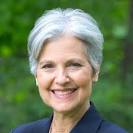
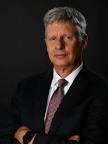
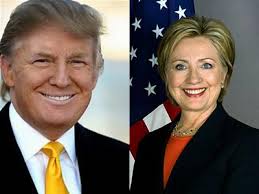
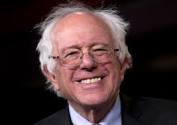
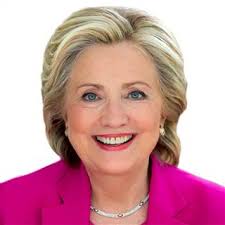
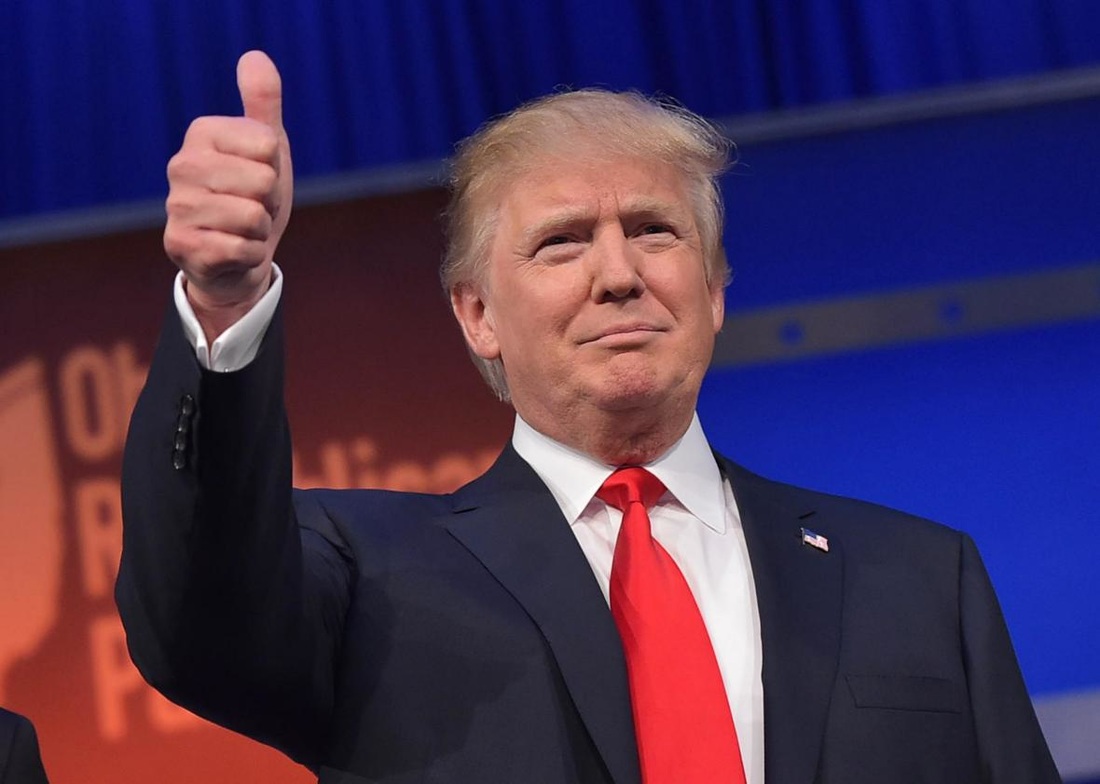
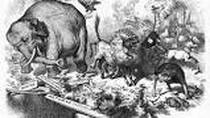

 RSS Feed
RSS Feed



